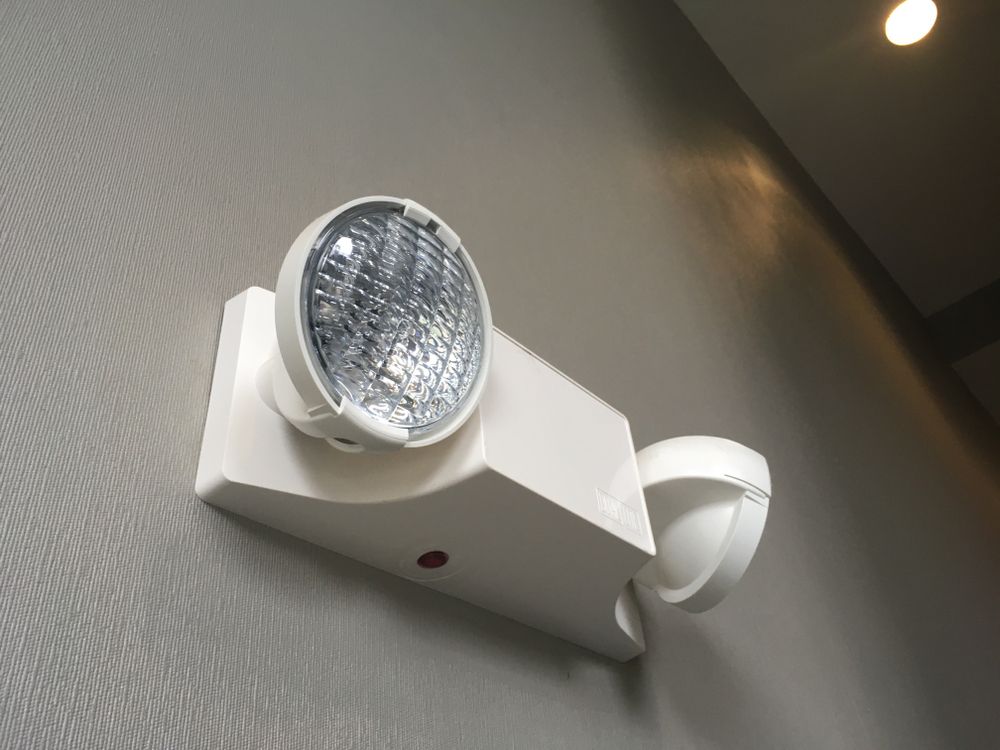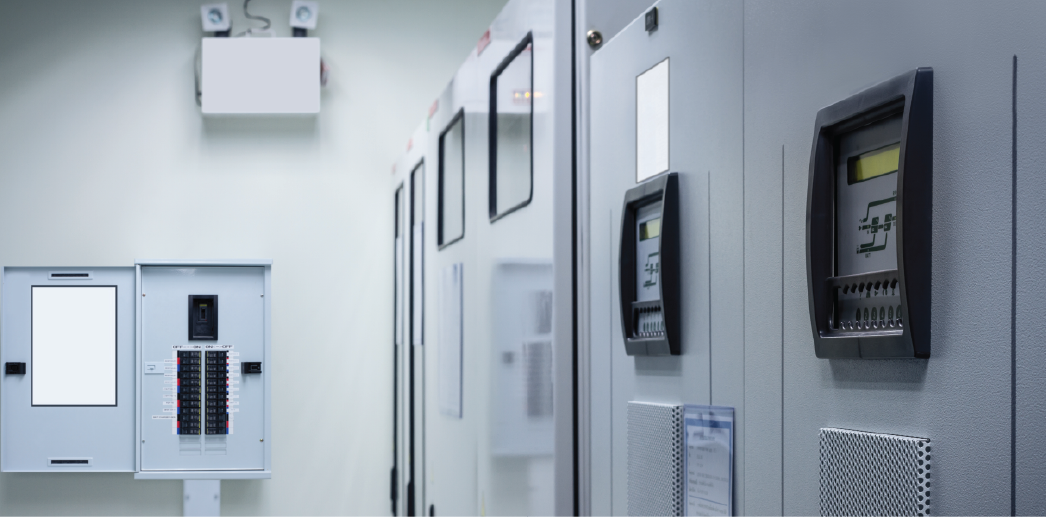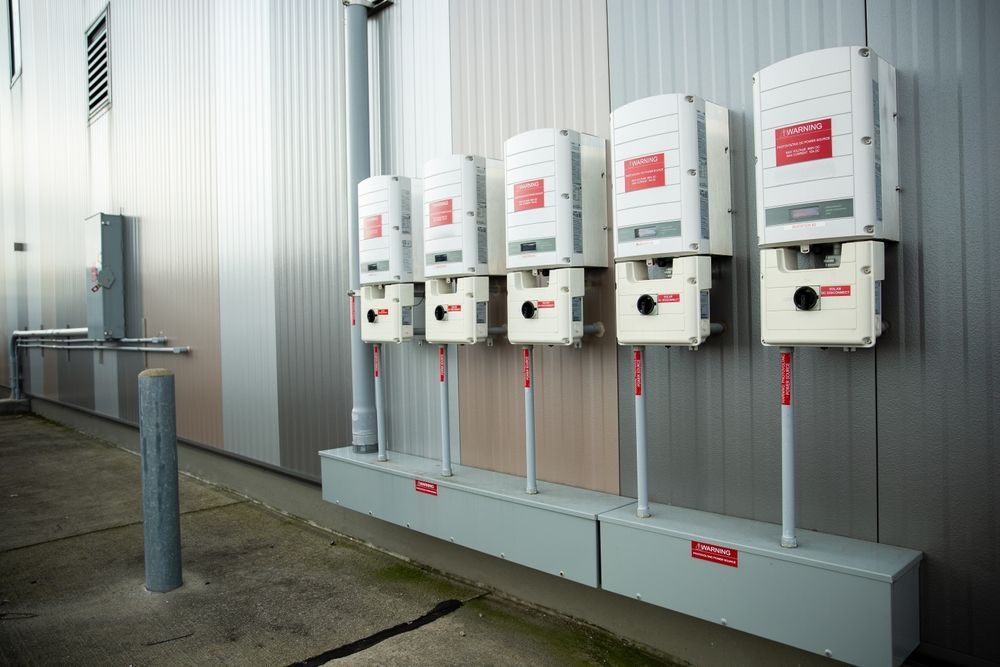What is an Emergency Lighting Inverter System?
Share this article:
Written by: Lighting Inverter Supply
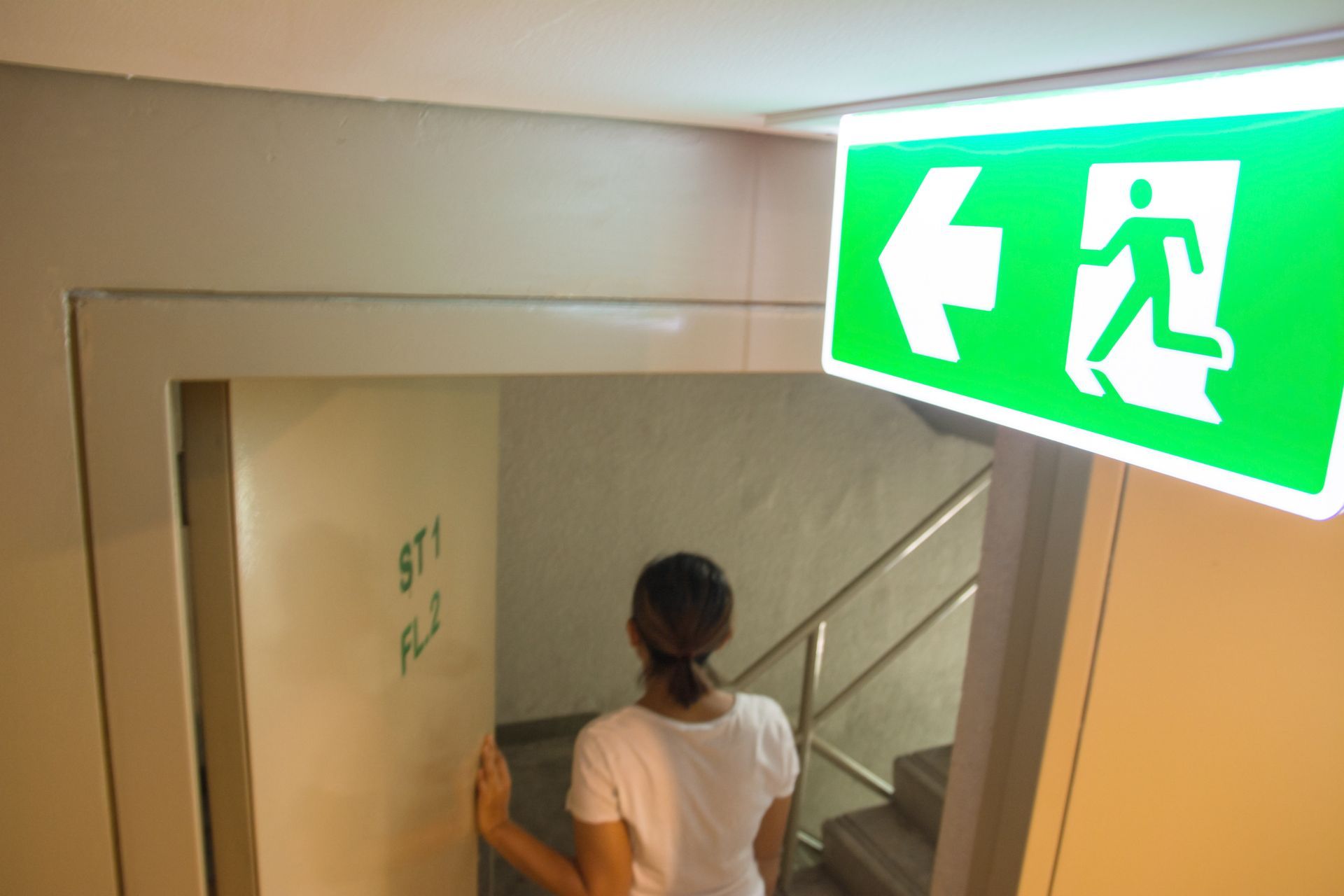
Table of Contents
- What is a Lighting Inverter and How Does it Work?
- Types of Inverters
- What to Look for in a Lighting Inverter
- How to Choose the Right Emergency Lighting Inverter System
- Components of a Lighting Inverter
- Frequency of Service Needs for Lighting Inverters
- The UL924 Standard
- Emergency Lighting Inverter System Applications
- Why Does My Business Need an Emergency Lighting Inverter?
- High-Quality Emergency Lighting Systems with Lighting Inverter Supply
When an emergency strikes your business operations, you need to ensure the safety of workers in case they need to evacuate the building or troubleshoot the problem. You also want to get customers to safety in the event of natural disasters, such as fire or flood, so they can leave the premises in the right direction. Emergency lighting inverters become a requirement to power emergency systems during outages.
When mapping out building emergency exit routes, do you consider the lighting that will guide patrons toward a safe exit in the event of a power outage? By implementing an effective emergency lighting system and installing lighting inverters, you can better secure safe exiting procedures and protocols. Therefore, in the content below, we answer the question: what is an emergency lighting inverter? Continue reading to explore two lighting inverter types and discuss applications by industry
What is a Lighting Inverter and How Does it Work?
One thing to understand about what is a lighting inverter is that it converts DC power to AC power. Most emergency systems run on backup battery power. The battery supplies direct current (DC) when powering devices. However, most emergency lighting systems and signs operate using alternating current (DC).
The lighting inverter provides DC power to the battery during normal operation. The moment the power goes out, the lighting inverter takes the DC power from the battery and converts it to AC power for the emergency systems. This backup power is available for your business in any emergency.
Created for many applications, the design of emergency lighting inverters extends beyond emergency lighting applications. For example, fire alarm systems, exit lighting, lighting control systems, and other safety equipment are often supported by an emergency lighting inverter. Therefore, emergency lighting inverter systems are paramount for generating and maintaining light and power during electric outages.
Types of Inverters
There are two different installation approaches when it comes to lighting inverters: central lighting and dispersed lighting.
Central Lighting
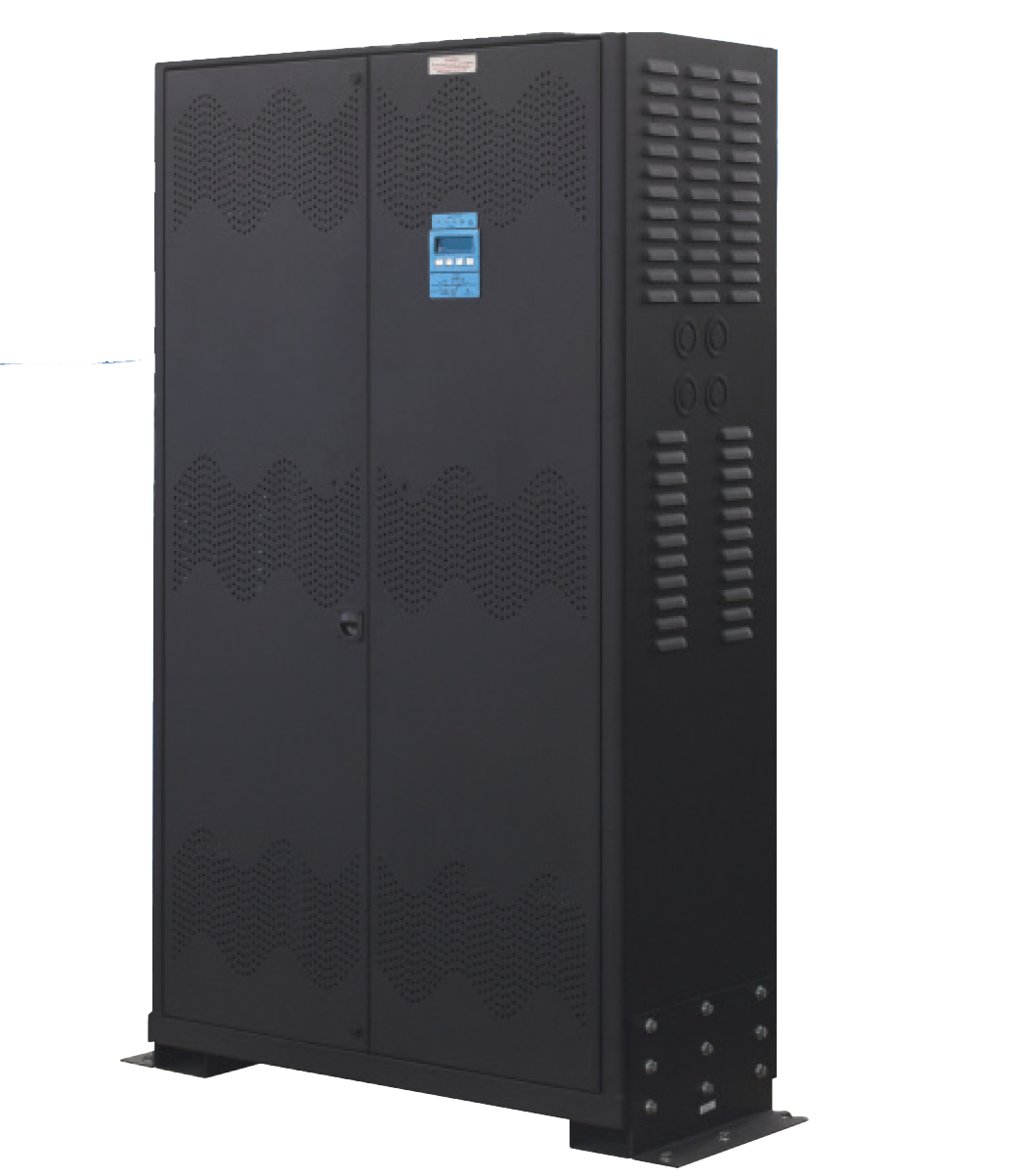
Matching its name, a central lighting inverter generates emergency lighting and backup power through a centralized lighting unit. Offering multiple lighting inverter design options that minimize maintenance requirements and optimize emergency lighting performance, this lighting system is capable of powering both existing indoor and outdoor fixtures.
Although central lighting inverter solutions offer lower operational and maintenance expenses, they do require a higher initial capital investment. However, the initial costs may be outweighed by the easy installation and
maintenance tasks due to its single, central location and battery system.
Dispersed Lighting
In contrast to a centralized lighting solution, dispersed lighting operates by supplying each individual light’s power with its own battery. As a result, in the event you experience an issue with a single emergency light, you can rely on other dispersed lighting to keep your building or exterior illuminated properly.
When implementing scattered lighting measures, it's crucial to factor in the sustained ownership and maintenance costs. Despite lower initial expenses of purchasing and installing dispersed lighting systems, this lighting solution may result in a higher total cost of ownership. Additionally, the manual upkeep may feel more cumbersome than a central lighting system as you must test each light to examine both batteries and functionality and ensure it meets proper safety standards.
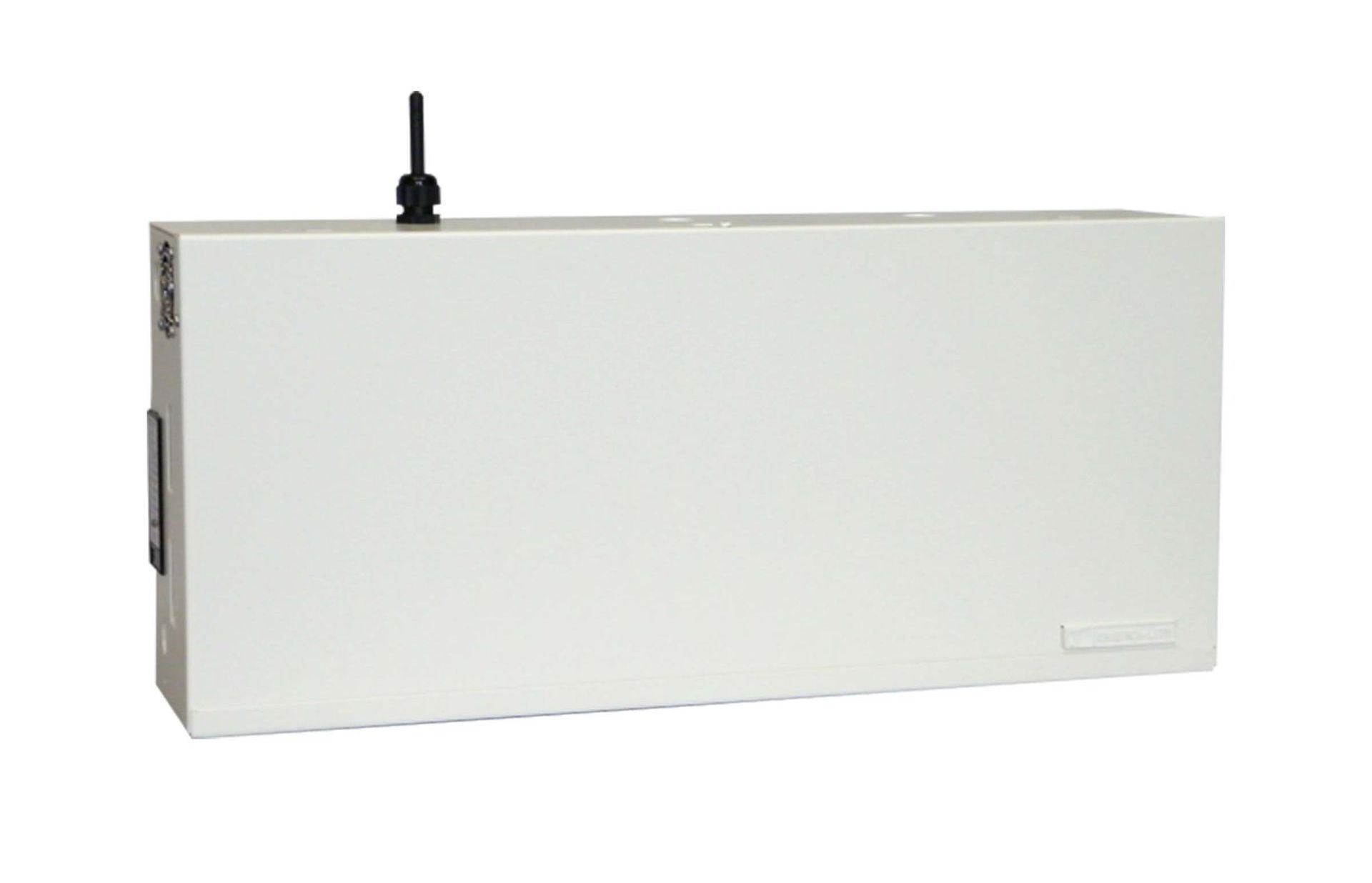
What to Look for in a Lighting Inverter
Lighting inverters come in different types based on wattage and the installation process. You want to look for an inverter that matches the same voltage as the battery. The inverter should also have the same wattage based on the devices that it will convert power to during an emergency. The total wattage and the total voltage will be listed on the inverter as a guide.
Another factor is the installation process. You can install an inverter along with a battery in each lighting system in the building, which is referred to as a dispersed lighting inverter system. In other instances, you may place the inverter where the main power is located to provide backup power to the entire building. This type is referred to as a central lighting inverter.
How to Choose the Right Emergency Lighting Inverter System
Selecting the right emergency lighting inverter ensures that all emergency lights work optimally to provide the necessary amount of illumination for the specified time. Due to the various needs of businesses, their operations, and the size of their facilities, business owners have a wide selection of inverter systems available. After learning about how a lighting inverter works, you can choose the best inverter based on the following factors:
Evaluating Power Requirements
Your emergency lighting systems should be connected to their own battery backups. No other systems should be connected. You want to take into account the total wattage of all emergency lighting fixtures. With this measurement, you want an inverter that can offer this total wattage for a specific time, usually up to 90 consecutive minutes, to provide power for optimal illumination.
Considering Installation Space and Environment
The inverter will be connected to the backup battery power supply. You need to evaluate how much space you will have for the cabinet housing the batteries and the inverter to ensure everything will fit in the allotted location. You also need to consider the environment. You want an area that is free of dust and grime, is not prone to shocks, and the place is cool and dry. These features ensure that both the backup batteries and the inverter components do not become damaged or lose capacity from extreme temperature fluctuations of vibrations.
Budget and Total Cost of Ownership
When purchasing a central lighting inverter, most business owners simply focus on the initial costs of installation when forming a budget. However, you should also include the maintenance and upkeep of the device, as well as the continual replacement costs for the batteries. Backup batteries usually last anywhere from 3 years up to 5 years depending on the amount of usage they endure. You also have to consider getting periodic inspections and repairs. Always calculate the total cost of ownership for the entire length of time that the central lighting inverter will be in service while developing your budget accordingly.
Customization and Scalability
Many lighting inverter companies allow for customization of their systems to better suit the needs of their customers. This aspect allows you to have a converter that integrates fully into your existing emergency systems. This customization also allows for better scalability, in case you need to add more emergency lighting systems due to business expansion and renovations.
Components of a Lighting Inverter
Lighting inverters come with various components that make up the entire system. They include the battery assembly, battery module, and battery charger that will supply the backup power. The inverter also has an output transformer as well as displays and controls for precise operation. Some inverters also come with a UPS module to provide constant filtered power.
Battery Assembly
The battery assembly consists of all the components needed in creating the battery cells, including the wire assembly, connectors, buss bars, and other components needed to connect the batteries to the inverter and other devices.
Battery Module
A battery module is an intermediate energy storage product that consists of multiple battery cells housed together into a single unit.
Battery Charger
The battery charger is typically customized to provide the specific voltage and current to the batteries for charging purposes. It is not advisable to switch out customized battery chargers for off-the-shelf chargers as they may not charge the batteries to their capacity.
Output Transformer
The output transformer provides the AC power from the inverter to the connected emergency lighting systems. You need to take into consideration the voltage rating and capacity of the output transformer to ensure full operation of the inverter and emergency lighting systems.
Displays and Controls
The central emergency lighting inverter will have displays and controls to allow for automated monitoring, diagnostics, alarms, and other features. The features that are available will depend on the manufacturer's system.
UPS Module
Emergency lighting applications may use the emergency lighting inverter for continuous power similar to that of an uninterruptible power supply (UPS) system. In these instances, the UPS module has an inverter that converts the DC energy to AC power output to connected devices.
Frequency of Service Needs for Lighting Inverters
Like other emergency systems in the building, you want to keep everything in working order to prevent malfunctions and service interruptions. Having the inverter not work when necessary can cause dangerous situations. You should service the lighting inverters at least twice a year. You may also obtain inverter and battery maintenance plans from our company for continuous upkeep.
The UL924 Standard
As emergency lighting inverters supply uninterrupted power to lighting systems during an outage, they must adhere to the UL 924 standard and the NFPA’s life safety requirements. The UL924 standard requires that every facility must have a compliant emergency lighting inverter effectively in place. Additionally, the inverters are also expected to have the capability of remaining lit for at least 90 minutes when the power goes out.
Lighting Inverter Supply only works with UL 924 standard, tested, and certified systems, providing you with the industry’s highest capacity and efficiency systems.
Emergency Lighting Inverter System Applications
Emergency lighting offers endless solutions spanning across both residential and commercial applications. Below, we discuss five different industries that especially benefit from implementing emergency lighting inverters.
Industrial
Today’s industrial processes have become incredibly complex due to automation, computerization, modernized equipment, and detailed quality control metrics. Additionally, many facilities and manufacturing plants use variable frequency drives, electric motors, and other production components that create a harsh electrical environment.
Therefore, to combat the high consumption of power and lighting, the industrial field must have proper
emergency lighting solutions in place when outages occur to ensure safe and regulated operations and procedures.
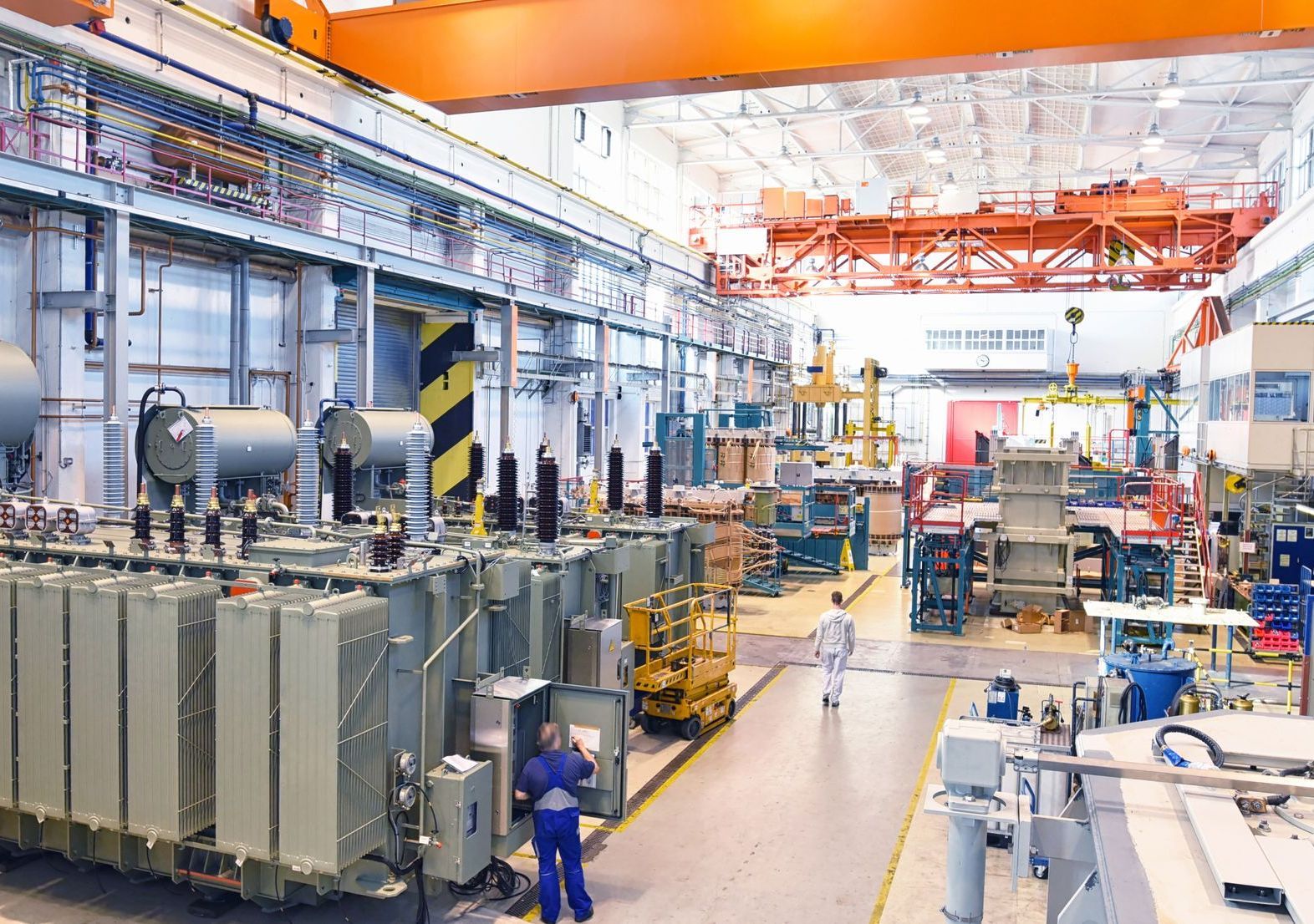
Protecting these controls and their applications such as wastewater treatment, automated manufacturing, food processing, and parts fabrication requires electrical power solutions that deliver isolated, regulated, transient, and noise-free sine wave power.
Medical
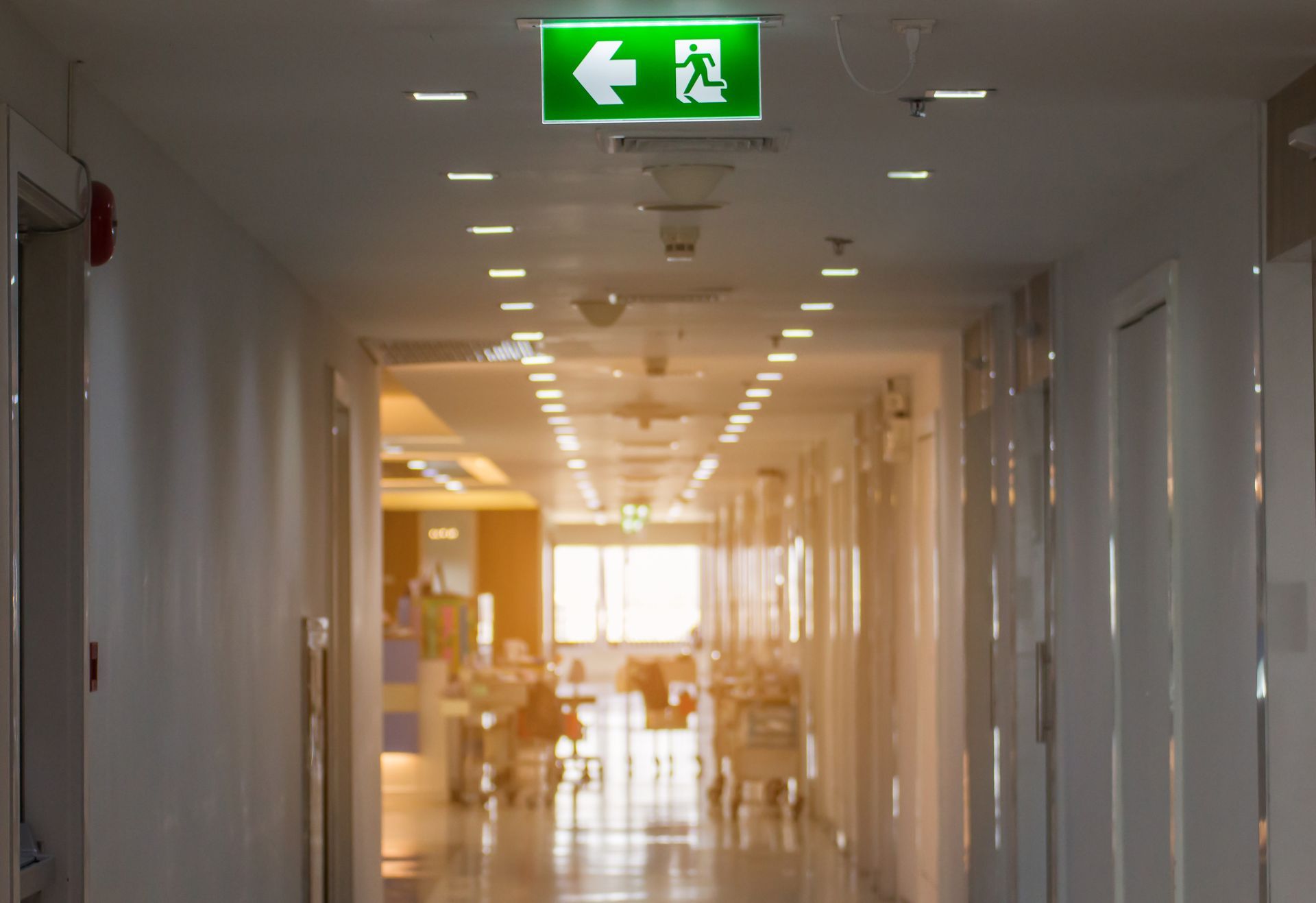
Medical-grade power quality cannot and must not be compromised. In the medical field, losing lighting or power can mean the difference between life and death. Healthcare industry experts believe that as many as 75% of electronics-based equipment disruptions and failures are attributed to “power quality” issues. What would it mean to your hospital or healthcare facility if 7 out of 10 equipment problems could be prevented?
Therefore, hospitals and other medical facilities go to extensive lengths to generate and maintain a consistent source of lighting and power throughout the entire facility.
The solution is to strategically install products that provide voltage regulation, isolation, and power distribution for medical imaging diagnostics/treatment equipment, in addition to battery backup (UPS) for “patient-vicinity” medical diagnostics and monitoring equipment.
Mining
Within the mining industry, all safety measures and protocols must work effectively. Therefore, most control functions are fully automated, including critical conveyor systems. As a result, this industry cannot work without a reliable UPS battery backup for the controlling server that promises a high tolerance to bad incoming power.
Retail and Commercial
With the current incorporation of technology in today’s retail and commercial industry, it is crucial to establish a reliable and regulated voltage and backup power to protect critical operations and data. In addition to general I.T. equipment, emergency lighting, and power inverter applications include surveillance cameras, security systems, and network communications. Furthermore, it is paramount for retail businesses to include battery backup protection at point-of-sale devices, including the network hardware responsible for communicating sales transactions.
Education
Keeping educational facilities running with efficient power quality plays a key component in ensuring a proper educational experience. Since computers and other electronic devices are now commonplace within classrooms and other educational venues, there is certainly a requirement for “clean power.”
To provide protection from electrical noise and voltage transients, “clean power” panelboards are often installed to feed computer lab rooms, and to protect sensitive A/V equipment within the performing arts center.
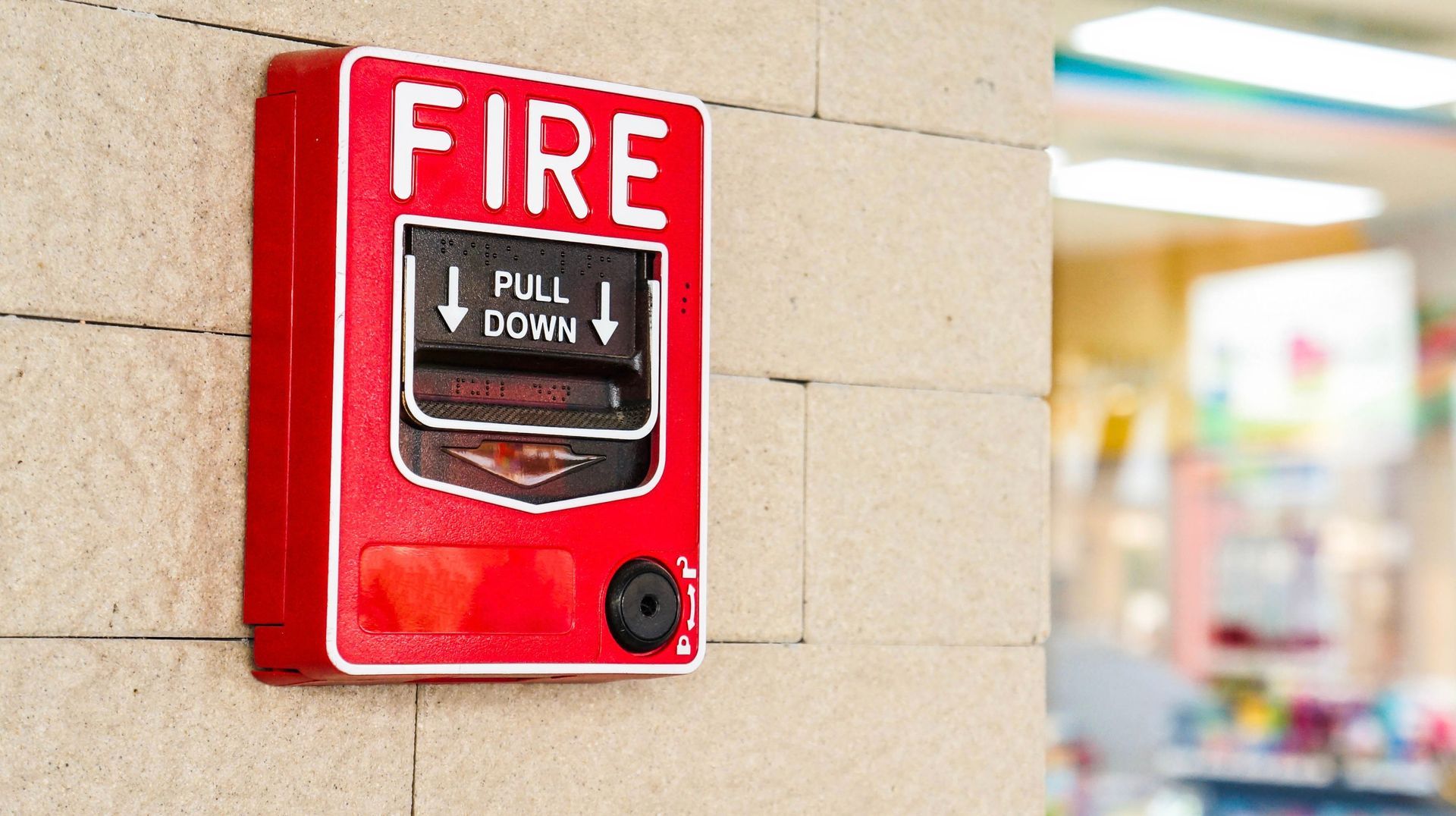
Each panelboard is supplied power from a multi-shielded, K-13 rated, computer-grade isolation transformer, typically together with a surge protection device (SPD).
Additionally, uninterruptible power is paramount for school security systems such as video surveillance cameras and safety measures for lockdown procedures. Battery backup is also needed for critical systems that allow the school to communicate both on campus and with local police and fire departments.
Why Does My Business Need an Emergency Lighting Inverter?
In many instances when an emergency happens, the power supply can become unstable and cause the regular lighting to go out. This problem can make it too dark in rooms to find emergency exits, fire extinguishers, and other emergency systems. Having an emergency light inverter ensures power is available for lighting systems, emergency exit signs, fire alarms, and other safety equipment. These inverters automatically operate without the use of an operator, allowing workers to perform other tasks.
High-Quality Emergency Lighting Systems with Lighting Inverter Supply
We understand that finding the right lighting inverter system for your application may feel cumbersome. Therefore, we at Lighting Inverter Supply pride ourselves on quality customer service, and overall industry experience in the mission-critical data center market. Our team members are available to assist you throughout the system selection process and will review the specifications and concerns you address.
Our lighting inverter products and services put proper measures in place so that every site receives the level of attention required for optimal operation and maintenance of certification standards. We execute decisive solutions with accurate information.
If you have any questions or would like to receive additional information about our products and services, our team is available for Technical Review of specifications, Sizing assistance, Voltage selection, and Runtime Calculations.
Contact us today to explore your emergency lighting solutions!
Connect with Us:
Request a Quote From a Product Specialist
Experienced Product Representatives are on hand to send you information and quotations for equipment. If you need help with sizing, installation planning, or general questions about product please fill in the appropriate form and someone will contact you shortly. You may also call 844-501-1887 to get a direct product representative.

